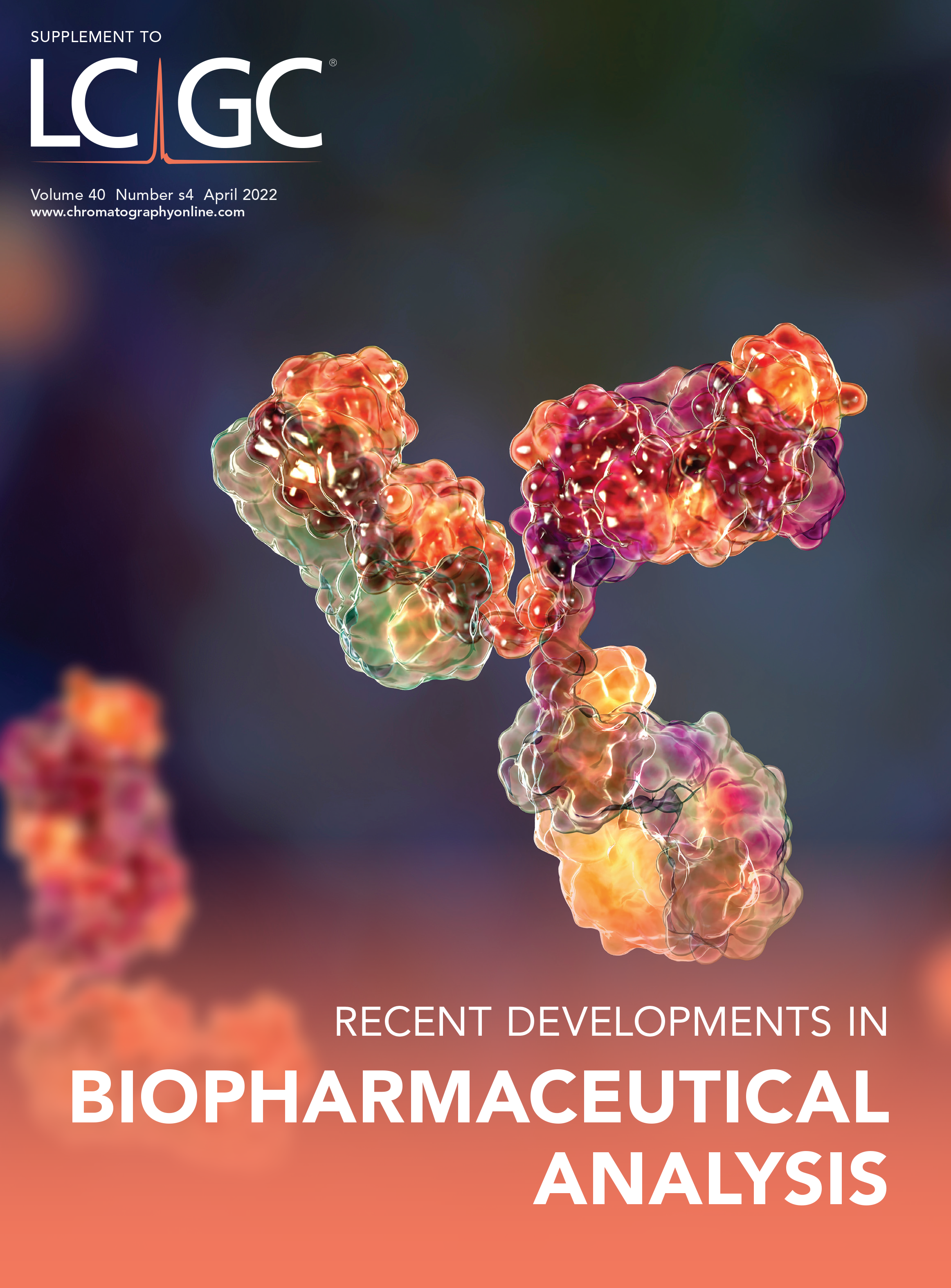State-of-the-Art Biopharmaceutical Analysis
From the Guest Editor
As novel and complex biotherapeutic formats are entering the pipeline of most biotech companies and progressing through development into commercialization, the role of analytical characterization has become increasingly crucial. Analytical methods that provide significant time savings, while preserving resolution and efficiency, and are highly desirable (and necessary) to enable faster development of new therapies in an increasingly competitive landscape. This special issue provides an overview of some current analytical trends and recent advances in biotherapeutic characterization, with the aim of providing valuable insights into how we can overcome some of the analytical challenges associated with the next generation of biotherapeutics.
Davy Guillarme and colleagues introduce a new chromatographic separation strategy, the “multi-isocratic approach,” developed to improve selectivity for the separation of molecular antibodies (mAbs) and related variants, which is often challenging. They describe, with various examples, how the multi-isocratic approach can achieve much higher resolution compared to common linear, multilinear, or any non-linear gradient, under reversed-phase liquid chromatography (RPLC) conditions.
Several authors in this special issue illustrate the effectiveness of immobilized enzyme reactors (IMERs) to streamline protein digestion for liquid chromatography–mass spectrometry (LC–MS) analysis. Patricia Molina and Julien Camperi describe various examples that illustrate how IMERs can be combined with multi-dimensional chromatography (MDLC) workflows to allow faster characterization of post-translational modifications (PTMs) of biotherapeutic proteins. Anje Bathke and colleagues review commercially available and selected trypsin IMERs in regard to their application in LC-based and automated sample preparation. The publications discussed demonstrate the efficiency and suitability of these trypsin IMERs to perform online protein digestion, which is reflected in high sequence coverages, robustness, good repeatability, and relatively low rates of missed cleavages in respect to the significantly shorter online digestion time compared to manual approaches.
In another article, Camperi describes how online LC with high-resolution mass spectrometry (HRMS) detection can be successfully applied to the online monitoring of critical quality attributes (CQAs) directly in the bioreactor, with the potential to enable real-time decisions.
In a similar trend, Jonathan Bones and colleagues compare an online Protein A-MS method (Protein A affin- ity chromatography coupled to MS) with a standard laboratory-based multi-attribute method (MAM) method, demonstrating that similar information can be obtained using the two methods. Although the laboratory-based MAM method can detect a higher number of PQAs, the Protein A-MS method is an ideal analytical solution when sample is limited or when rapid turnaround of the analytical result is needed.
Esme Candish and colleagues discuss advances in HRMS that are making it an increasingly critical tool for identifying, characterizing, and monitoring attributes of protein-based therapeutics.
Dwight Stoll and Bob Pirok highlight how the more widespread use of multi-dimensional separations will require more systematic approaches to method development, that rely less on user experience, and more on model-driven approaches. Recent research, aimed at developing such systematic approaches in support of method development, is discussed in this mini-review.
Overall, this special issue presents various approaches to overcome the challenges related to the analytical characterization of biotherapeutics, in an increasingly complex and rapidly evolving landscape. These are examples of how analytical workflows and characterization strategies need to evolve along with the next generation of biotherapeutic formats, to continuously enable faster, yet comprehensive product characterization throughout the drug development process.
Cinzia Stella, PhD
Senior Scientist and Group Leader Department of Protein Analytical Chemistry Genentech
South San Francisco, California
stella.cinzia@gene.com


Accelerating Monoclonal Antibody Quality Control: The Role of LC–MS in Upstream Bioprocessing
This study highlights the promising potential of LC–MS as a powerful tool for mAb quality control within the context of upstream processing.

.png&w=3840&q=75)

.png&w=3840&q=75)



.png&w=3840&q=75)



.png&w=3840&q=75)













